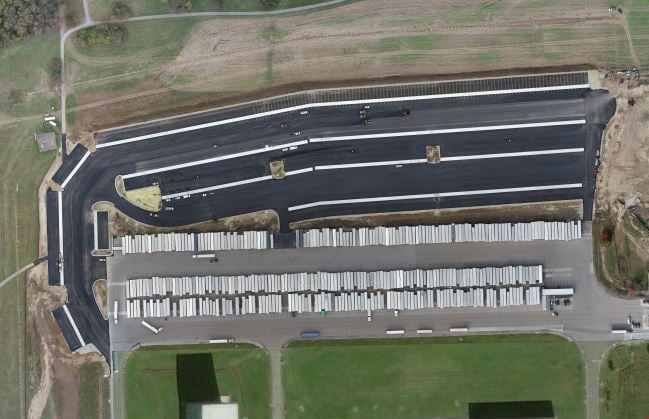 By Troy Kaiser
By Troy Kaiser
Senior Consultant
Like many owners or managers, you probably do not spend a lot of time thinking about the pavements at your site unless a major issue is brought to your attention. Pavements may be lower priority compared to all the other things you keep track of, but the pavements at your site are likely more valuable than you think and can be one of the most expensive assets you have. The cost to replace the typical car parking lot in asphalt can run about $5.00 to $7.50/square foot. For typical concrete trucking areas, the cost can be approximately $9.00 to $13.50/square foot. Any other high-value asset at your site would certainly warrant more attention to maintaining proactively rather than only addressing when there is an issue and then potentially having to pay out the full value to replace. To ensure you are managing this asset and related costs effectively, consider executing a pavement management plan for your site.

A pavement management plan is critical to controlling costs.
Protect the Asset
A good pavement management plan starts with knowing your pavements. An initial inspection followed by regular future inspections is recommended to determine the condition of the pavements, identify needed repairs and safety hazards, and track future performance. It is also recommended to perform these inspections in the spring as this would allow action on any adverse impact on the pavement due to the fall and winter weather cycles. Once the pavements have been inspected, they should be prioritized by condition and usage. A pavement in poor condition may need rehabilitation; however, if it is not being used as much as another pavement in better condition, it could be a lower priority. To be most effective, preventive maintenance should be performed to extend the life of good condition pavements and to improve structural integrity of fair condition pavements to avoid them declining into reconstruction mode.
Defend Your Budget Request
After you know what you have and implementation of your pavement management plan is underway, how do you secure the funds to put this plan into action? The best way to justify the funds you need to manage your pavements is to have solid data as the basis for your budget request. This information may be obtained from a comprehensive pavement evaluation report. The report should include pavement conditions, photos, recommended repairs and rehabilitations, budget estimates for at least five years, and a detailed drawing of the site that ties off to the report. Most importantly to a “fleet” of sites, there should be a means to prioritize to meet goals and to assure the best use of the budget requests. Having this type of report compiled during your first inspection is a great way to start managing your pavements effectively in the years that follow.
Optimize Pavement Usage
A pavement management plan should include studying how to optimize pavement usage. Items such as traffic flow and parking layout can often be improved if the time is taken to analyze the available area. Optimization studies can result in increased parking stalls for customers or, in the case of an industrial site, faster turnover of a parking lot during shift changes. Trucking operations should be studied for efficiency improvements as well. Moving trailer parking areas closer to the shipping and receiving areas can result in time savings for trailer movements, which also results in a decreased wear on equipment. A pavement management plan that is shared throughout your company can also help in coordinating the different departments in your firm’s future expansions. Pre-planning for future parking or trucking areas will ensure the new pavements are appropriately designed and integrated effectively with existing pavements and located to fit the planned expansions.

Planning is the key to maintaining your pavement assets.
Safety
Safety is an important part of a pavement management plan for several reasons. With a master plan, you can identify safety issues before they become liabilities. By using the yearly inspection to locate any safety hazards and then following up with actions to correct the issues, you minimize potential injuries to employees and customers. At times, safety considerations need to go beyond the pavement conditions. Safety improvements, such as separating car from truck traffic and pedestrian from vehicular traffic as much as possible, can be analyzed to take a proactive approach rather than reactive once an event has occurred.
ADA Compliance
As with safety issues, ADA compliance may become a liability as well. ADA compliance, as it relates to pavement areas, encompasses many different items. Components of ADA compliance include the size and slope of the stalls, access aisles, parking access routes, ramps, and public access routes. ADA compliance also addresses the number of stalls, stall location, pavement markings, and signage. A pavement master plan helps identify and ultimately address areas where deficiencies exist. By keeping ADA compliance up to date, the potential for costly litigation may be avoided.
The components that make up your pavement asset are most effectively tracked and addressed by having a pavement management plan. Knowing your asset and having a plan is the first step to proactively managing your pavements, cutting costs, and improving your facility.
